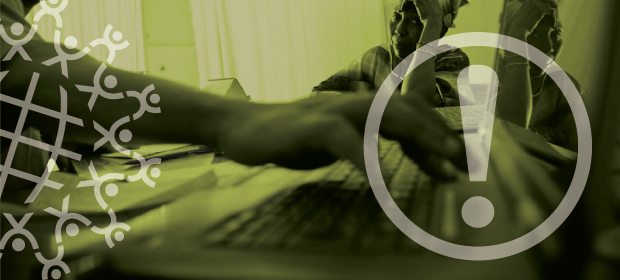Where We Work
See our interactive map


Tech billionaires aren’t classic philanthropists, president and editor-in-chief of Devex Raj Kuma said during his opening keynote at this year’s Triangle Global Health Consortium annual conference.
They don’t just provide money with some general goals in mind, he said. (Think of Andrew Carnegie building libraries in small towns across the US). Instead, they’re engaged in the process of global development with the attitude and approach of investors—looking for the organic, game-changing approach that grows by itself.
And unlike traditional development project funders, they expect failure along the way—but failure that comes early and cheaply.
Using their expertise in tech development and funding the development of approaches result in what Kumar called an “open source” deliverable. By that, he meant that whatever model, approach, tool, or even software they produce is freely available for adoption.
If it’s adopted and useful, great. If not, then it wasn’t such a great idea to begin with. Let the market have a hand in deciding—rather than aid groups.
Perhaps the idea of linear thinking in development is beginning to recede.
Kumar’s note on open source resonates with me, since IntraHealth International, where I work, has been so active in the development of both open source software, such as iHRIS, and in open source collaborations, such as OpenHIE and mHero.
While our approaches have been donor-funded, the facts that every few months or so another country adopts iHRIS to manage its human resources data—and that countries have continued to use the software for many years—speak to a market environment that finds value in what we offer.
Kumar also objected to the notion of silver bullets in global development, and praised the complexity reflected in the Sustainable Development Goals (SDGs). By that, I took him to mean that perhaps the idea of linear thinking in development is beginning to recede.
(For a book-length examination of this perspective, see Ben Ramalingam’s Aid on the Edge of Chaos: Rethinking International Cooperation in a Complex World, Oxford University Press, 2013. Sorry, but I cannot avoid assigning a reading list.)
Ann Mei Chang, executive director of the US Global Development Lab at the US Agency for International Development, provided a matching bookend to Kumar’s thinking during her closing keynote. She offered an overview of the goals and developments at the lab, and I heard an alignment with Kumar.
The SDGs are part of the context for the lab’s efforts, she said. And she summarized the its approach in three steps: disrupt, develop, mainstream. (I heard echoes of Clayton Christensen, probably from his seminal work, The Innovator’s Dilemma: When New Technologies Cause Great Firms to Fail, Harvard Business Review Press, 1997.)
The lab’s particular focus is on innovations in the social and business realms with a timeframe of five years. The idea is to break through existing impediments to global development with disruptive innovations, put them through a brutal winnowing process, and mainstream the survivors to maximize their impact. Not dissimilar to the approach that Kumar advocated—just carried on in a different area and with more programmatic framing. These are interesting perspectives and fields of action, but I sensed a deeper possibility.
In my area of action—information systems for stronger human resources for health—there is a convergence of approaches taking place. We can see it concretely in IntraHealth’s contributions to OpenHIE’s Health Worker Registry and the Care Services Delivery standard, among others. These support more than just looking up information across systems; they enable a new type of interconnected information to advance health care.
These resources and standards help address little questions (Is this person a qualified nurse so we can hire her?) and big questions (Where do we have the greatest shortage of midwives?).
We can now collect data on what works and what doesn't at historically trivial cost.
Perhaps we’re heading toward some sort of consensus, at least on the notion that we have to foster a global development learning community similar to the learning organizations that business thinkers have supported. (One last reading assignment, but it’s a classic: Peter Senge’s The Fifth Discipline: The Art and Practice of the Learning Organization, Doubleday, 1990 & 2007.)
We can now collect data on what works and what does not by leveraging available information and communications technologies—at historically trivial cost. We can send a question in an SMS text message to thousands of health workers and get the responses in a day. Those responses provide feedback to understand if an intervention, innovation, or program is working.
If something works, we support it. If it does not, we should drop it. The question is, do we in the development community have the courage to do the latter?
(If you looked up any of the above readings, you get an A. If not, you have an extension to complete the assignment.)
Get the latest updates from the blog and eNews




